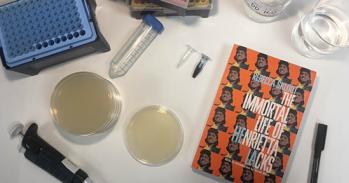Imagination is where ideas start: in the mind’s eye. The ability to think creatively – to dream the impossible – is behind the technological developments that have transformed the world. Science, suggests the second of four Cambridge Shorts, is an art.
Imagination is where ideas start: in the mind’s eye. The ability to think creatively – to dream the impossible – is behind the technological developments that have transformed the world. Science, suggests the second of four Cambridge Shorts, is an art.
Where does science come from? It comes from inside our heads and our imagination. Science is the unknown, from the biggest scale to the tiniest, waiting to be discovered. It is the process of dreaming how the world works and having the courage to follow that dream. Light is a metaphor for conceiving ideas: letting the outside in and the inside out. Where the two meet is the point of vision: the ability to see what might be.
The visual imagination isn’t simply frivolous. It is utterly vital to understanding the scientific and technological developments which have allowed our society to evolve, both historically, and in the present day.
This film is a “love letter to scientific daydreaming”; to the importance of creativity in science; to the old-school sci-fi classics, and the way they captured the imagination. This is about the art of being a scientist.
Believing is Seeing is one of four films made by Cambridge researchers for the 2016 Cambridge Shorts series, funded by Wellcome Trust ISSF. The scheme supports early career researchers to make professional quality short films with local artists and filmmakers. Dr Eleanor Chan (History of Art) and Dr Marcus Fantham (Chemical Engineering and Biotechnology) collaborated with filmmaker Alex Allen.

The text in this work is licensed under a Creative Commons Attribution 4.0 International License. For image use please see separate credits above.


